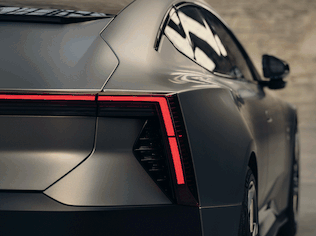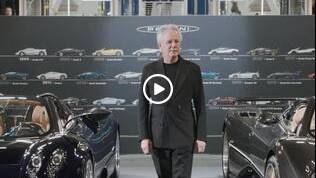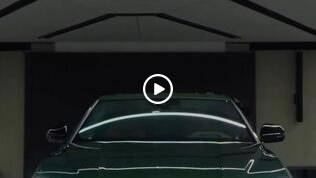A concept design by Liam Ferguson, the AMATOYA is a concept reconnaissance and suppression vehicle that gives us a new approach to fire-fighting.
This highly advanced and specialized light tanker functions primarily as a reconnaissance vehicle and offers unmatched vehicle and crew safety and survivability.
It promises to be the best front line defense during the scene of an emergency.
RECONNAISSANCE
Currently the role of site reconnaissance is predominantly carried out by light tankers or QAVs (Quick Attack Vehicles), typically these are modified single cabin commercial utility vehicles such as the Toyota Landcruiser. While the off road performance and maneuverability of such a vehicle is sufficient, its ability to actively suppress a fire threat is severely limited by the considerably small water supply (500lt) and distinct lack of survival engineering, fundamentally making it inadequate for its role.
CREW LAYOUT
Typically medium and heavy tankers require 5-6 crew members to be operated effectively. AMATOYA requires only 2. More military in its approach, reducing crew numbers per appliance will allow for greater dispersion of resources during a fire response.
Principal concerns when developing a vehicle of any nature are driver position, ingress/egress and vision angles. These elements become even more crucial in a vehicle purpose built for reconnaissance. A central, forward and high driver and ROSCO operator position akin to the Apache assault helicopter with generous down vision will assure functionality.
Access is via two gull wing doors, an optimal solution to accommodate the unconventional bodyside form. The distinct lack of a traditional b-pillar will provide uninterrupted views for the ROSCO operator situated above and behind the driver.
SURVIVABILITY
Cabin temperature and vehicle survivability are central to the AMATOYA concept. Existing approaches in survival engineering on fire tankers consistently appears as augmentation rather than integration. Methods are passive, typically reactive and often incapacitate the appliance when in use. A key example is the use of curtain heat shields, while effective, when employed render the appliance out of operation.
To create a homogenous directive towards survivability AMATOYA incorporates state of the art clear aerogel laminated insulation in the windows and bodywork, a dedicated auxiliary water supply to operate a highly efficient, intelligent temperature controlled spray down system, military grade sacrificial thermo ceramic intumescent paints, and a mechanically injected large displacement diesel engine specifically engineered for the unique conditions experienced on the fire ground.
These measures will assure that even in the case of an extremely prolonged and high intensity burnover the vehicle will not only maintain cabin integrity, but opposed to existing appliances AMATOYA will remain fully operational.
SUPPRESSION ABILITY
A Remotely Operated Suppression Cannon Outfit (ROSCO) coupled with a generous 1800lt + 400lt auxiliary water supply, offers a unique dynamic to vehicle operation. Current suppression techniques require large crew numbers (at least 5 per appliance) to perform through intermittent periods of strenuous labour to have any form of impact on a fire. The ROSCO system utilizing IFEX3000 impulse technology is not only a hugely efficient means of fire suppression, but vitally will eliminate crew members being subjected to the elements and stresses of extended high intensity work on the fire ground, while constantly maintaining vehicle mobility. A highly rated thermal imaging camera along with directional spot lights will assist in ‘hotspot’ location to determine the most effective direction of attack.
OFF ROAD PERFORMANCE
AMATOYA represents the pinnacle of specialized performance in the fire appliance design field. Off road capabilities reflect enthusiast 4WD methods, including generous approach, departure and over ramp angles, suspension travel, ground clearance and minimized turn circle.
Central tire inflation (CTI) and run flat tire (RFT) technology coupled with beadlock tires will allow an extensive band of dynamic pressure control to aid in traversing the complex terrain often encountered on the fire ground.
MANUFACTURING
The vehicle adopts many conventional fabrication techniques associated with low production run specialized vehicles. The point of difference which separates this concept from existing appliances is the proposed monocoque steel body, comparable to military MRAP vehicles. A conventional fire tanker is built body-on-frame from a standard cab chassis truck base. While this approach is successful, the lack of integration results in certain performance issues. Body roll due to the on board water supply is an notable problem, however by creating a fully integrated solution, water reservoirs can be strategically located central and low in the vehicle to dramatically improve the centre of gravity.
Source: Liam Ferguson in Yanko Design



















